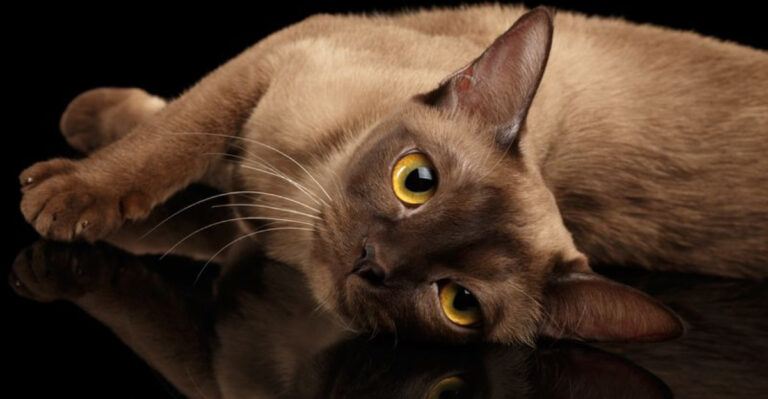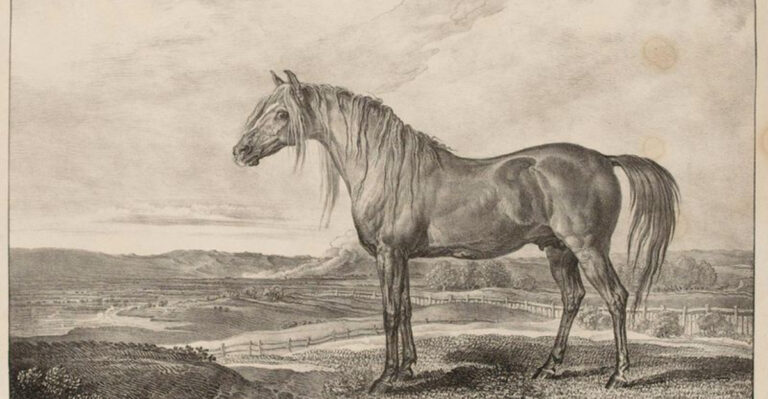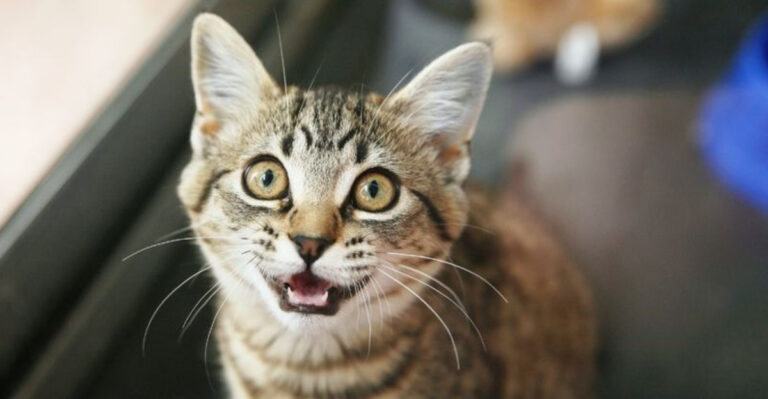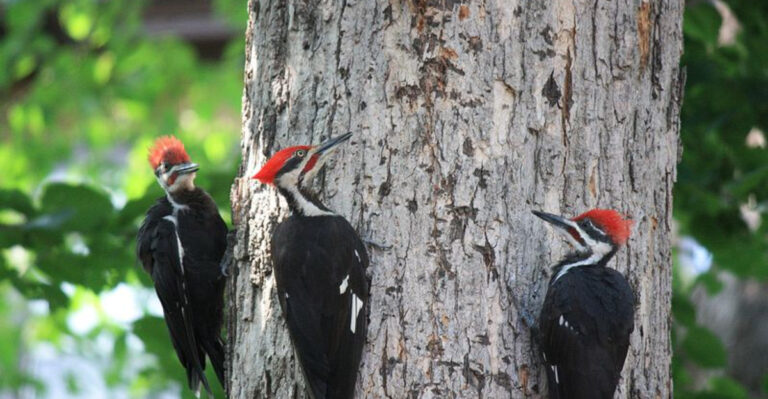A Guide To The World’s Most Stunning Colorful Birds
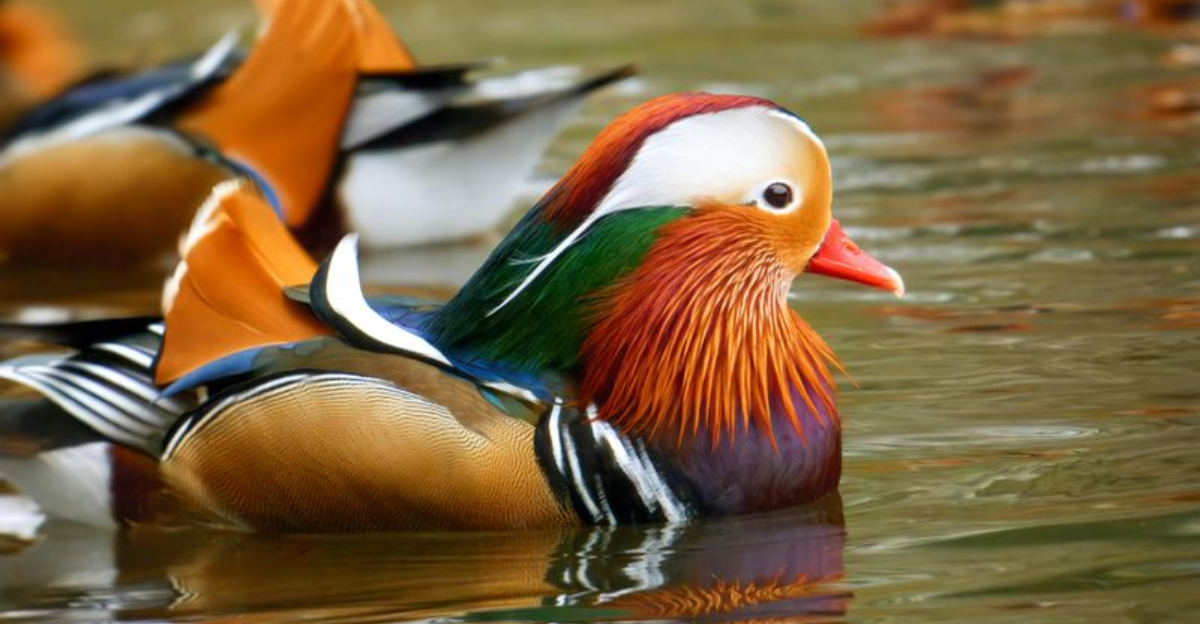
Birds are nature’s living masterpieces, displaying some of the most vibrant colors found in the animal kingdom. From the lush rainforests of South America to the savannas of Africa, these feathered wonders captivate us with their extraordinary plumage.
Join me as we explore thirteen of the world’s most breathtakingly colorful birds that showcase nature’s artistic brilliance.
1. Scarlet Macaw: The Flying Flame
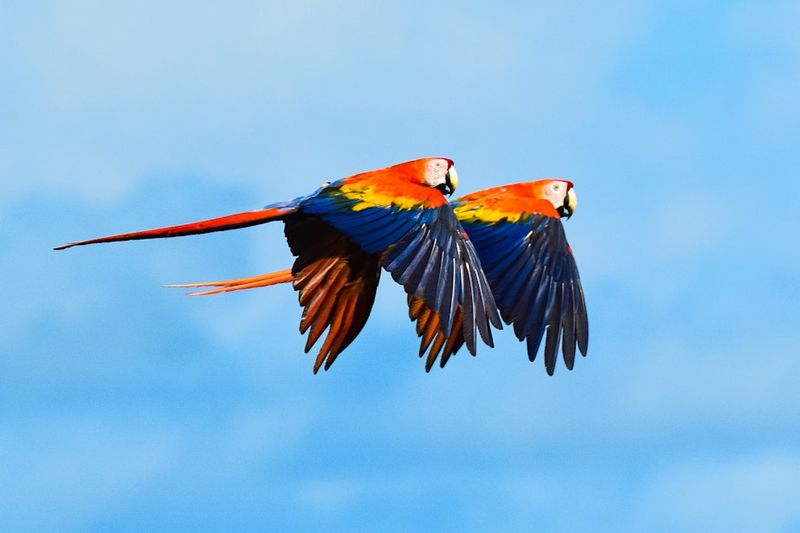
Soaring through Central and South American rainforests, the Scarlet Macaw commands attention with its spectacular crimson, yellow, and blue plumage. These intelligent parrots can live up to 75 years in the wild!
What makes them truly unforgettable is their size – with wingspans reaching 3 feet across. Their vibrant colors aren’t just for show; they help these social birds recognize each other among dense jungle foliage.
2. Resplendent Quetzal: Sacred Emerald Of The Cloud Forest
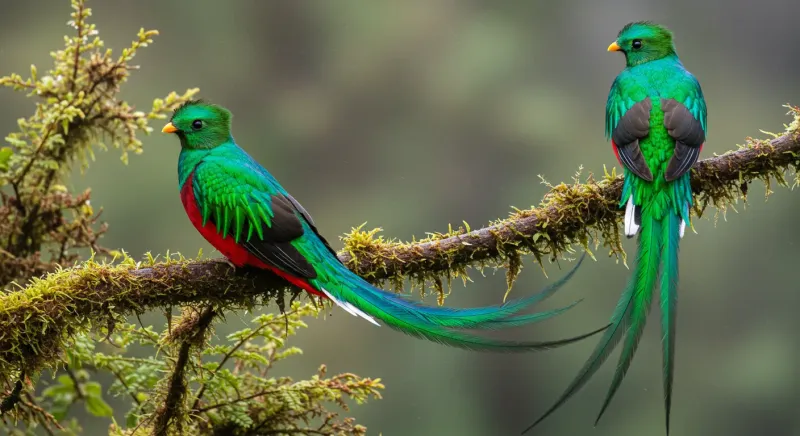
Ancient Mayans revered this bird as divine, and one glance explains why. Males boast shimmering emerald bodies, ruby-red breasts, and tail feathers that can grow up to three feet long.
Found in the misty cloud forests of Central America, these elusive birds feed primarily on wild avocados. Despite their spectacular appearance, Resplendent Quetzals face habitat loss, making glimpses of their iridescent beauty increasingly rare treasures.
3. Lilac-Breasted Roller: Savanna’s Flying Jewel
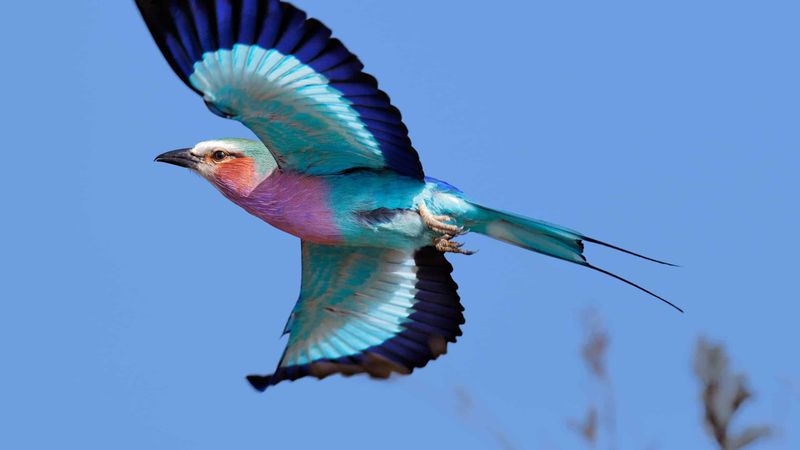
Against the golden backdrop of African grasslands, the Lilac-breasted Roller creates a striking contrast. Its pastel lilac throat transitions to a turquoise belly and chestnut back, making it appear almost surreal.
The name “roller” comes from its acrobatic courtship display – rolling and diving through the air with spectacular agility. These birds are fiercely territorial, often seen perched prominently on dead trees, scanning for insects and small prey below.
4. Gouldian Finch: Australia’s Living Rainbow
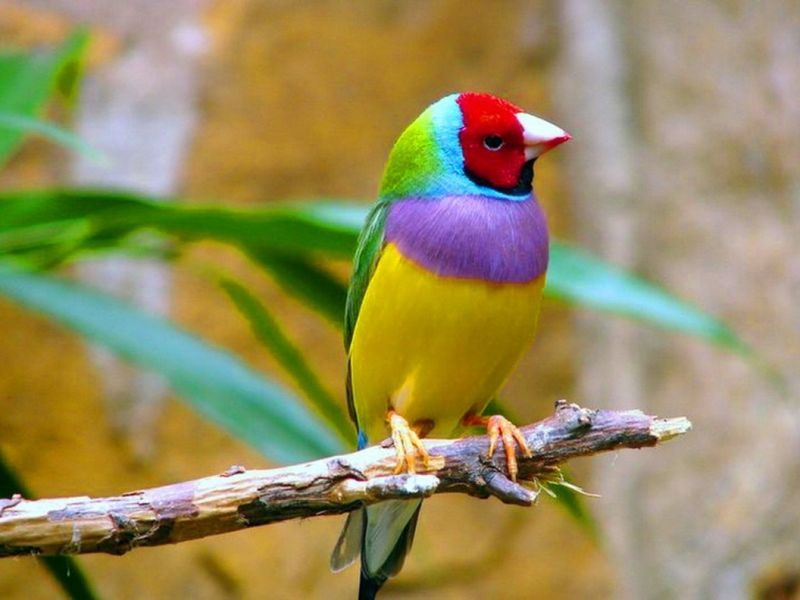
No two Gouldian Finches look exactly alike! These tiny Australian marvels sport multi-colored faces that can be black, red, or yellow, paired with vibrant purple chests and lime-green backs.
Barely five inches long, they gather in flocks around water sources during dry seasons. Unfortunately, habitat destruction has made these living jewels endangered in the wild, though their popularity in aviculture helps preserve their genetic diversity.
5. Indian Peafowl: The Royal Showstopper
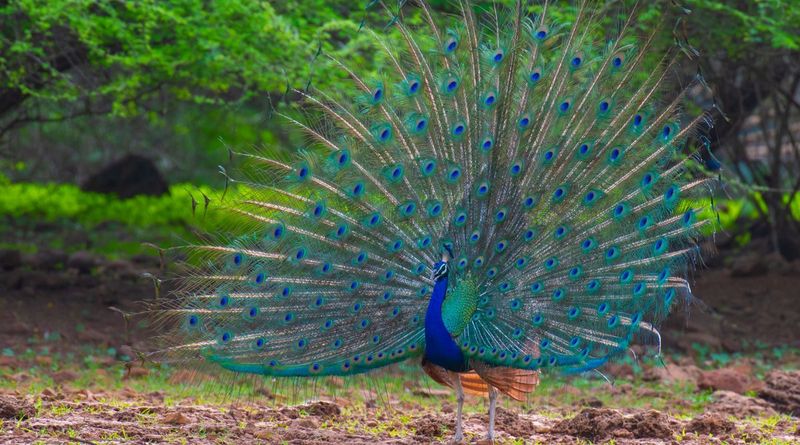
Kings and emperors throughout history have kept these magnificent birds as symbols of wealth and power. Male peacocks unfurl their spectacular trains during courtship, revealing iridescent eyespots that seem to shift colors with every movement.
Each train contains up to 200 elongated feathers and can span six feet when fully displayed! Though native to India, these adaptable birds have been introduced worldwide, bringing their regal beauty to gardens and parks across continents.
6. Rainbow Lorikeet: Australia’s Feathered Party
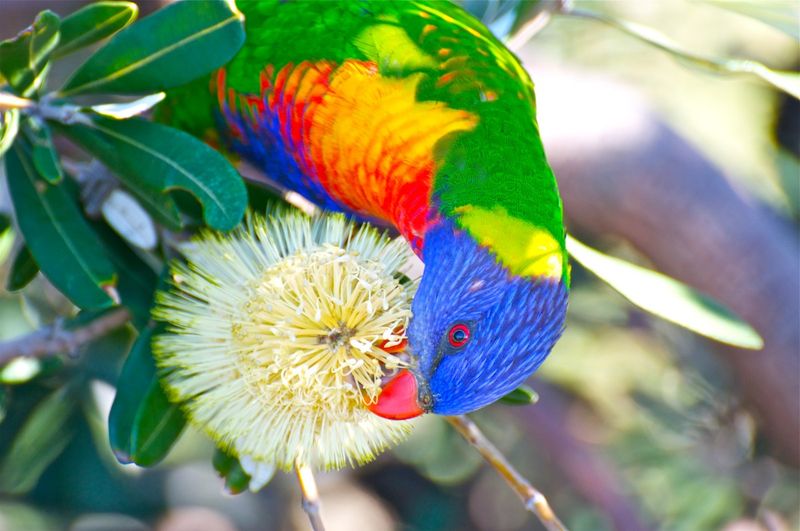
Bursting with personality and color, Rainbow Lorikeets bring tropical vibrancy to Australian cities and forests alike. Their electric blue heads, orange-yellow breasts, and green wings create a kaleidoscope effect when flocks gather.
Unlike typical seed-eating parrots, these energetic birds have specialized brush-tipped tongues for slurping nectar and pollen. Their playful antics and raucous calls make them beloved characters in urban parks, where they’ll often approach humans with curious fearlessness.
7. Wilson’s Bird-Of-Paradise: The Island Gem
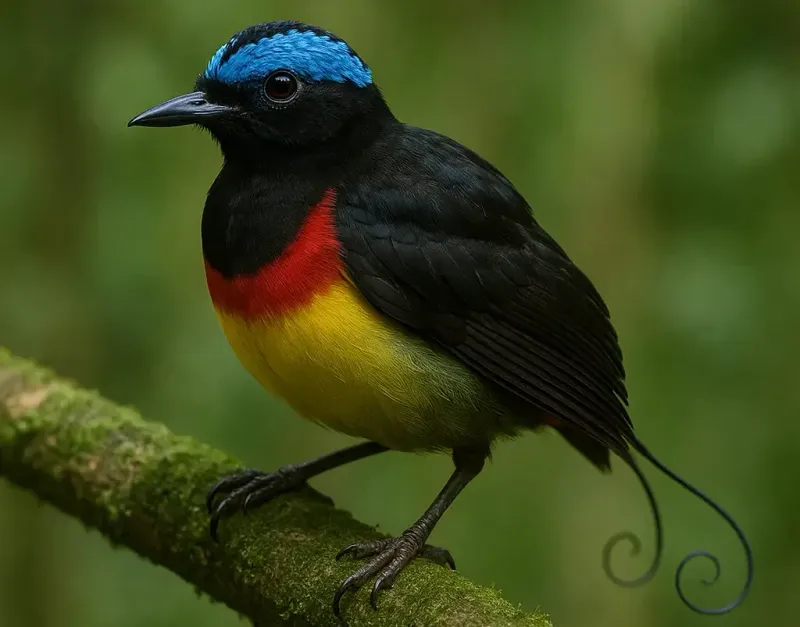
Hidden in the remote forests of Indonesia’s Waigeo and Batanta islands lives one of Earth’s most spectacular creatures. The male Wilson’s Bird-of-Paradise flaunts a turquoise skull cap, crimson back, yellow neck cape, and iridescent green breast shield.
Perhaps most bizarre is its curled violet tail feathers and bare blue skin on its head. To attract females, males meticulously clear forest floor stages where they perform elaborate dances, their colors seeming to glow in the dappled jungle light.
8. Turquoise-Browed Motmot: The Pendulum Bird
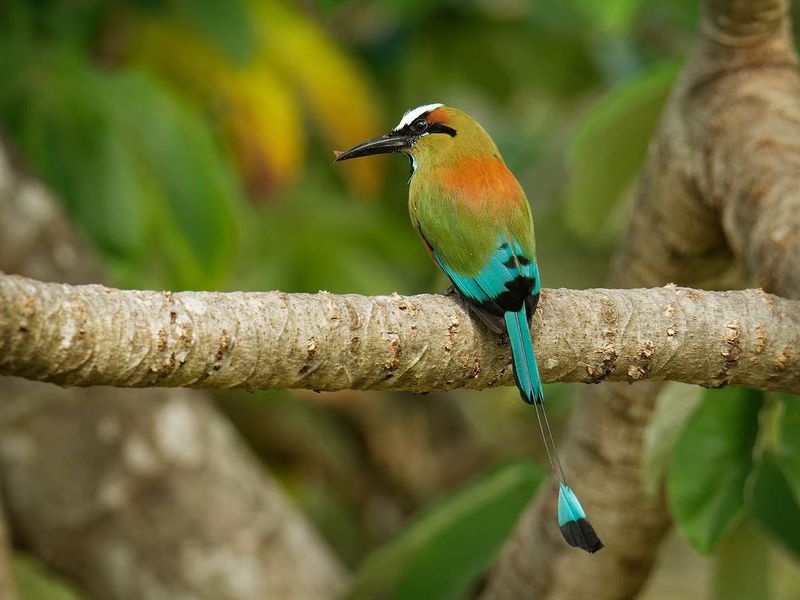
Spotting a Turquoise-Browed Motmot feels like discovering a secret treasure in Central American forests. Its aquamarine brow stretches across its face like a mask, contrasting beautifully with its rusty-orange belly and emerald-green back.
Most distinctive are its tennis racket-shaped tail feathers that swing like pendulums when the bird is excited. These cavity-nesting birds dig tunnels up to six feet long in riverbanks and cliffs, creating safe havens for raising their young.
9. Painted Bunting: North America’s Secret Rainbow
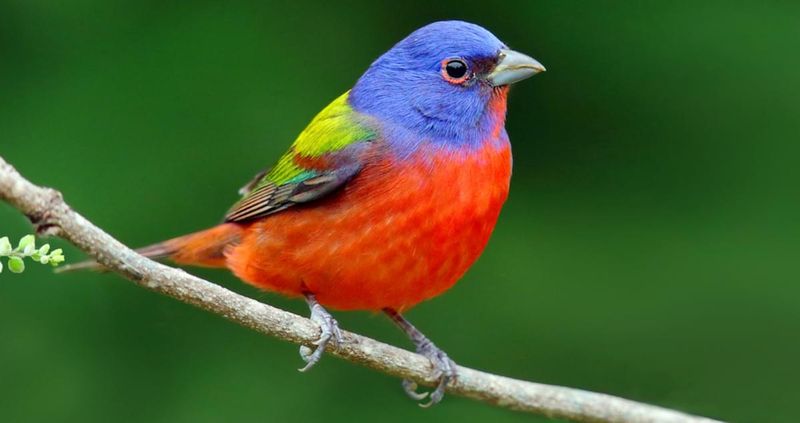
Looking like an escaped artist’s palette, the male Painted Bunting combines colors you’d never expect to see on a single bird. Its cobalt blue head, fiery red underparts, and lime green back create a startling contrast against southeastern US woodlands.
Female buntings sport a uniform yellow-green that provides perfect camouflage while nesting. Despite their brilliant colors, these shy songbirds often remain hidden in dense foliage, making each sighting a special event for birdwatchers across the southern United States.
10. Violet Sabrewing Hummingbird: The Purple Giant
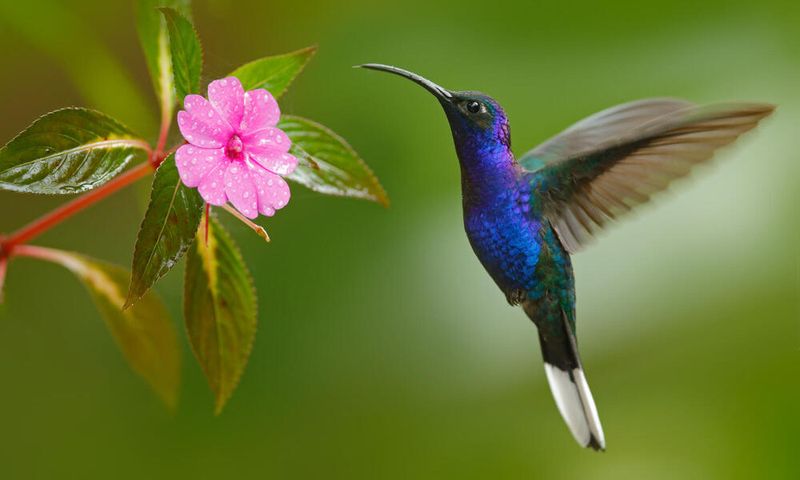
Among hummingbirds, the Violet Sabrewing stands as a magnificent giant. At nearly 6 inches long, it dwarfs many of its relatives while flashing stunning violet-purple plumage that shifts from magenta to deep blue depending on the light.
These powerful flyers navigate Central American cloud forests with incredible precision. Their long, curved bills are perfectly adapted for extracting nectar from heliconia flowers. When hovering, their wings beat an astonishing 18-23 times per second, creating a distinctive humming sound.
11. Blue-Crowned Pigeon: New Guinea’s Royal Blue Giant
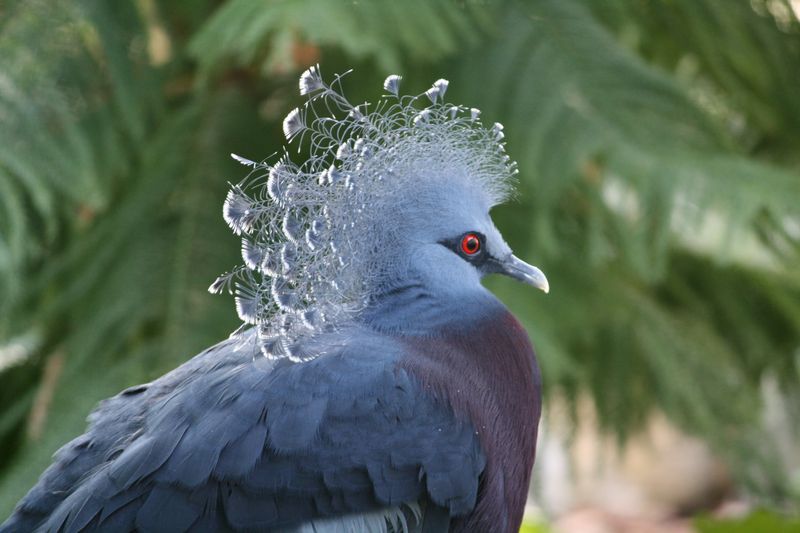
Far removed from city pigeons, the Blue-Crowned Pigeon walks the forest floors of New Guinea like avian royalty. Roughly the size of a chicken, its powder-blue plumage is accented by a spectacular crest of lace-like feathers that fan upward from its head.
These gentle giants feed primarily on fallen fruits, playing a crucial role in seed dispersal throughout rainforests. With deep maroon eyes and a distinctive red beak, they combine elegance with impressive size as the world’s largest surviving pigeon species.
12. Northern Carmine Bee-Eater: Africa’s Crimson Acrobat
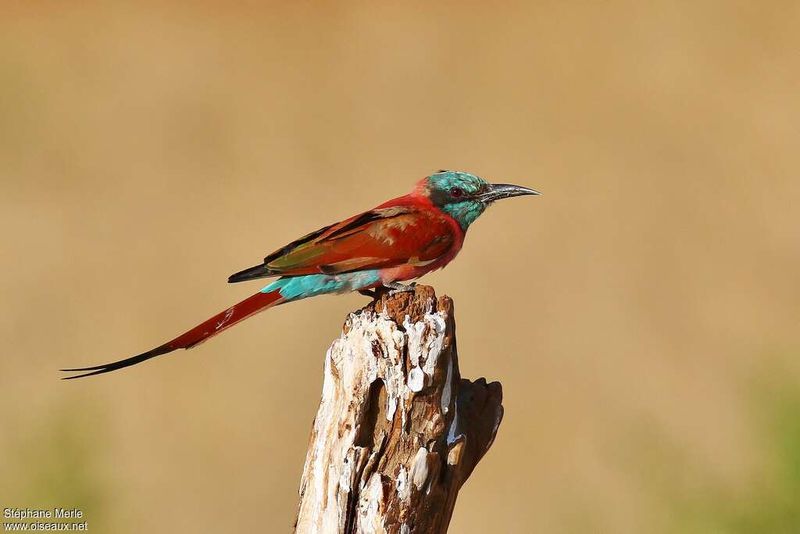
Like flying rubies against African blue skies, Northern Carmine Bee-Eaters display some of the most intensely saturated colors in the bird world. Their brilliant crimson bodies contrast with turquoise crowns and throats, creating a visual spectacle when colonies gather.
These aerial hunters perform incredible mid-air acrobatics, snatching bees and wasps with pinpoint precision. Before eating their stinging prey, they cleverly remove the venom by rubbing the insect against a perch. Nesting in riverbank colonies up to 10,000 strong, they transform sandy cliffs into vibrant avian communities.
13. Mandarin Duck: Nature’s Floating Painting
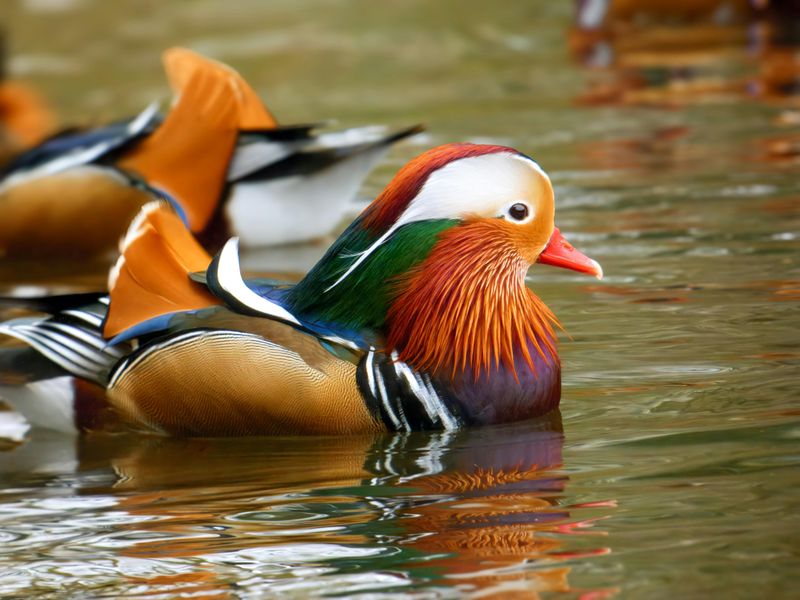
Native to East Asia, the male Mandarin Duck seems almost unreal with its artistic blend of colors. Orange sail-like feathers rise from its back while purple, green, white, and blue details adorn its compact body.
These peaceful ducks form strong pair bonds and nest in tree cavities above water. Once considered nearly extinct in their native China, conservation efforts have helped populations rebound, allowing more people to marvel at their extraordinary beauty.

